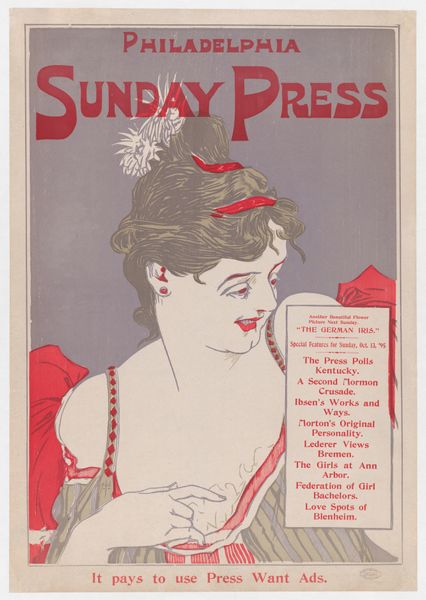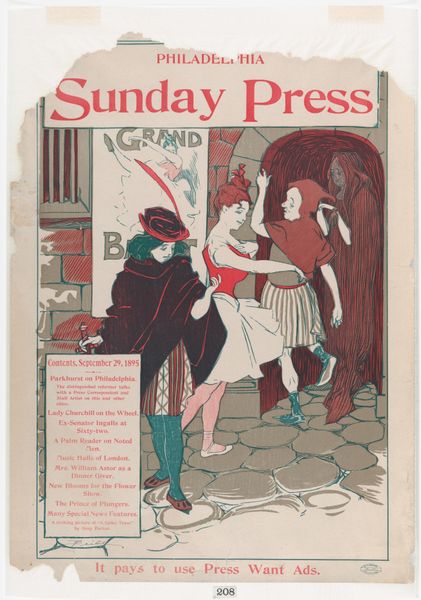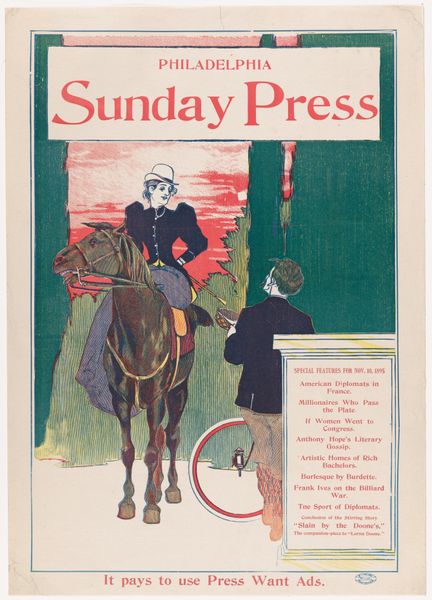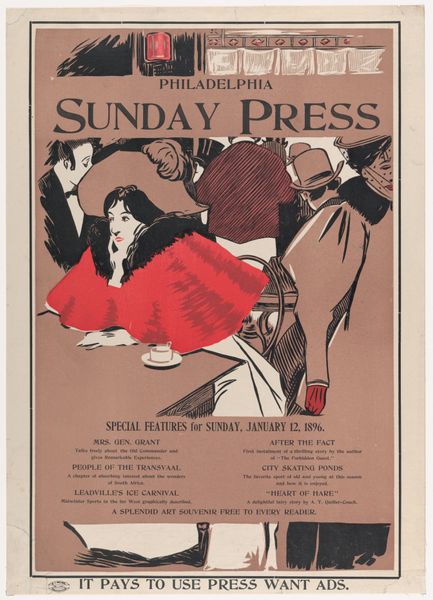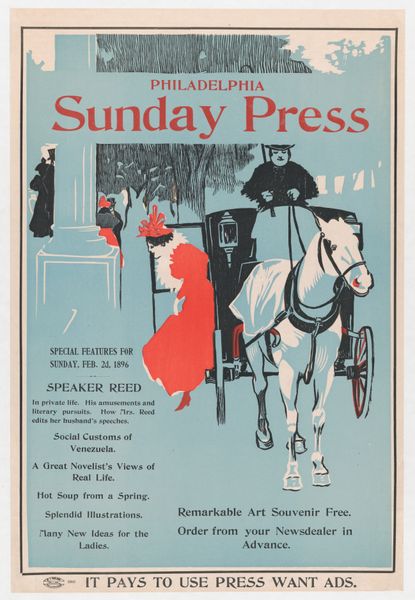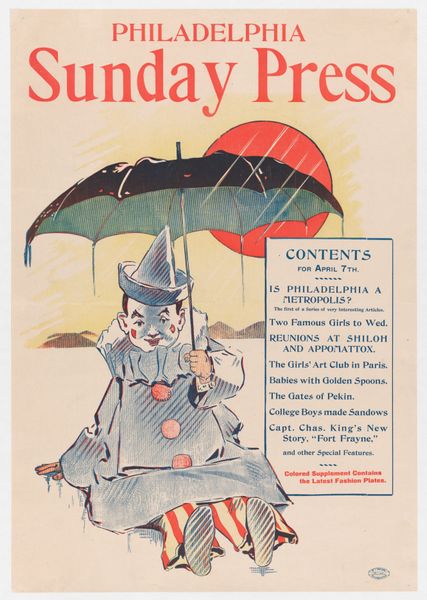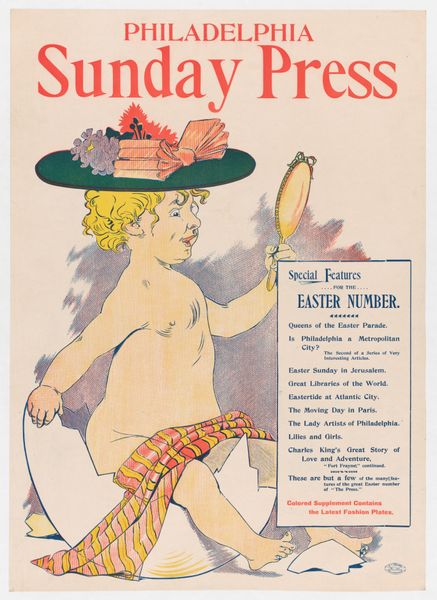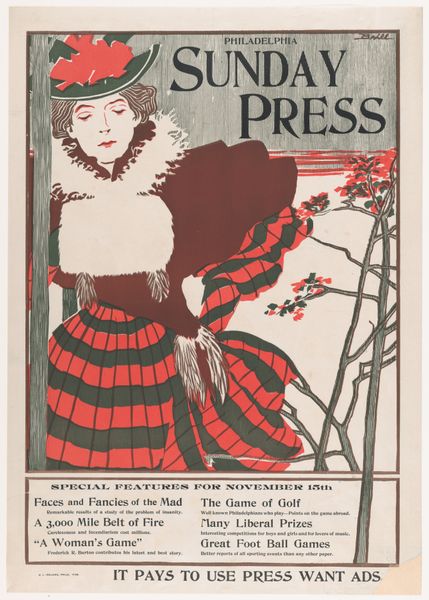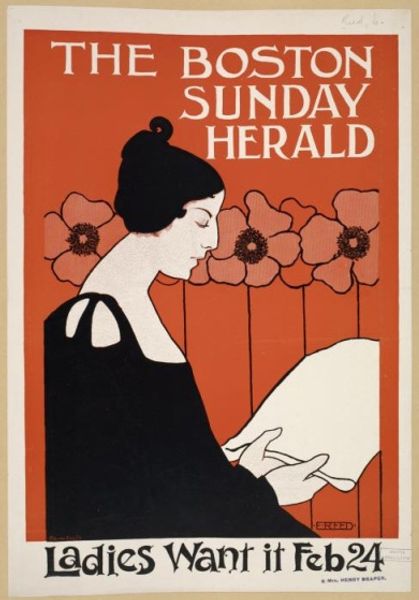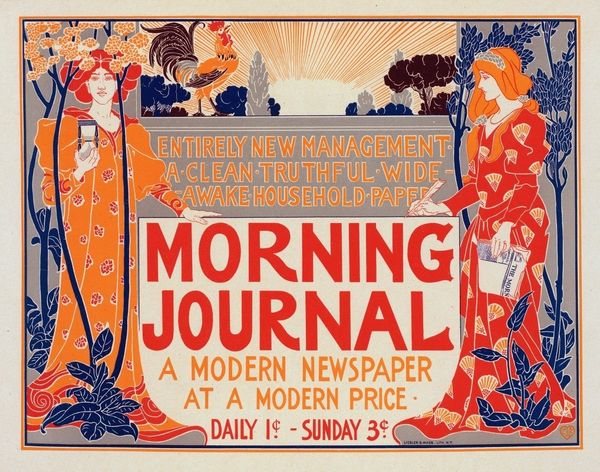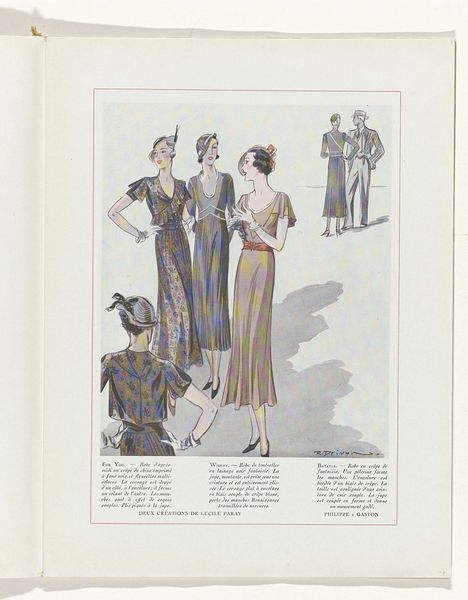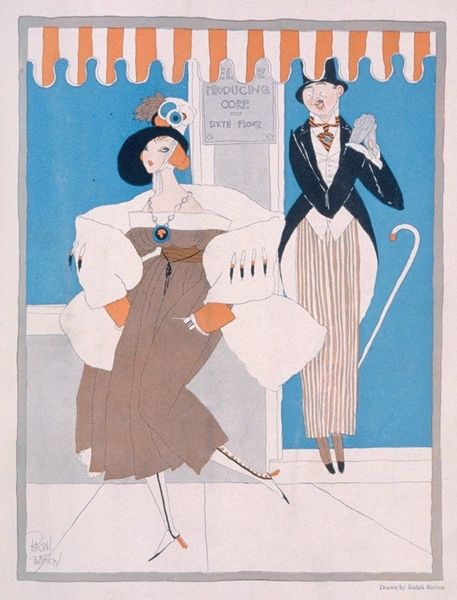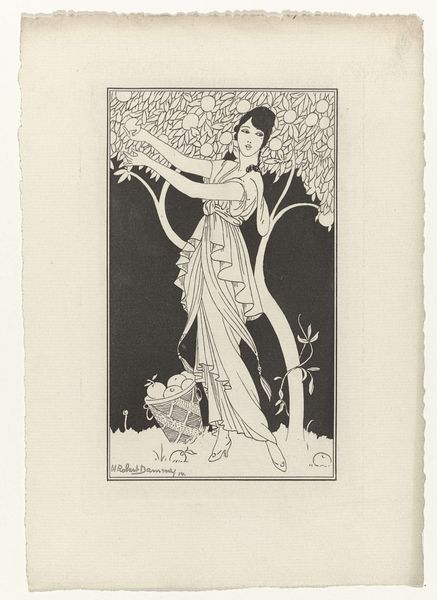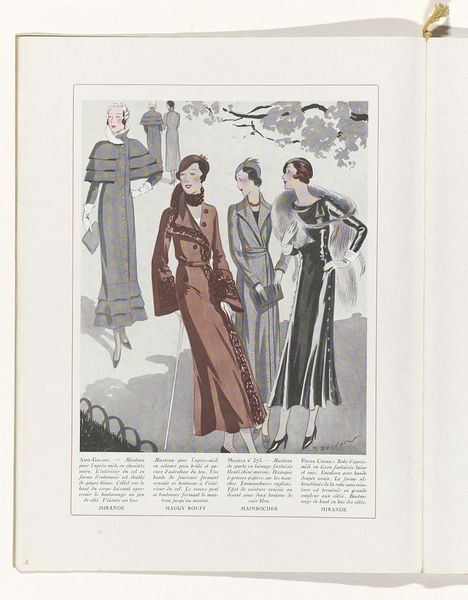
Advertisement for Philadelphia Sunday Press: Ferbruard 9, 1896 1891 - 1901
0:00
0:00
drawing, print, poster
#
portrait
#
drawing
#
art-nouveau
# print
#
figuration
#
poster
Dimensions: Sheet: 20 3/4 x 13 1/2 in. (52.7 x 34.3 cm.)
Copyright: Public Domain
Editor: So, this is "Advertisement for Philadelphia Sunday Press: February 9, 1896" by George Reiter Brill. It's a print, likely a poster. The women depicted have a compelling beauty, but the composition feels… interesting, slightly unbalanced. How would you interpret this work? Curator: The Art Nouveau style immediately places this within a specific cultural and historical context. It speaks volumes about the burgeoning advertising industry at the time and the visual strategies employed to capture the public's attention. How does the idealised, almost allegorical representation of women play into that, do you think? Editor: I see what you mean! I guess they were trying to make the newspaper seem sophisticated and alluring by associating it with these elegant figures. It's like they are selling a lifestyle as much as the news itself. Curator: Precisely! And the mention of Lincoln? The connection might seem tenuous to us now, but tapping into patriotic sentiment was a common tactic. It’s a way of imbuing the newspaper with gravitas and importance, linking it to national identity and historical narrative. Consider also the typography - what does that tell you? Editor: It emphasizes 'Sunday Press,' suggesting leisure and relaxation. The smaller print promises intellectual stimulation with the Lincoln feature. So, the advertisement positions the newspaper as both entertaining and informative. Curator: Exactly! That’s the balancing act publishers had to strike to appeal to a broad audience. Plus the bottom line reads, “It Pays to Use Press Want Ads." In what way is that line crucial to our interpretation of the image’s purpose and power? Editor: It's the heart of it. This beautiful artwork served purely commercial purposes: an economic engine and a pillar for societal communications of that era. The political use of visual art interests me even more now! Curator: Indeed, it's a reminder that even seemingly aesthetic choices are often intertwined with social, political, and economic forces. Editor: I'll definitely view turn-of-the-century print ads differently after this. Thanks!
Comments
No comments
Be the first to comment and join the conversation on the ultimate creative platform.
